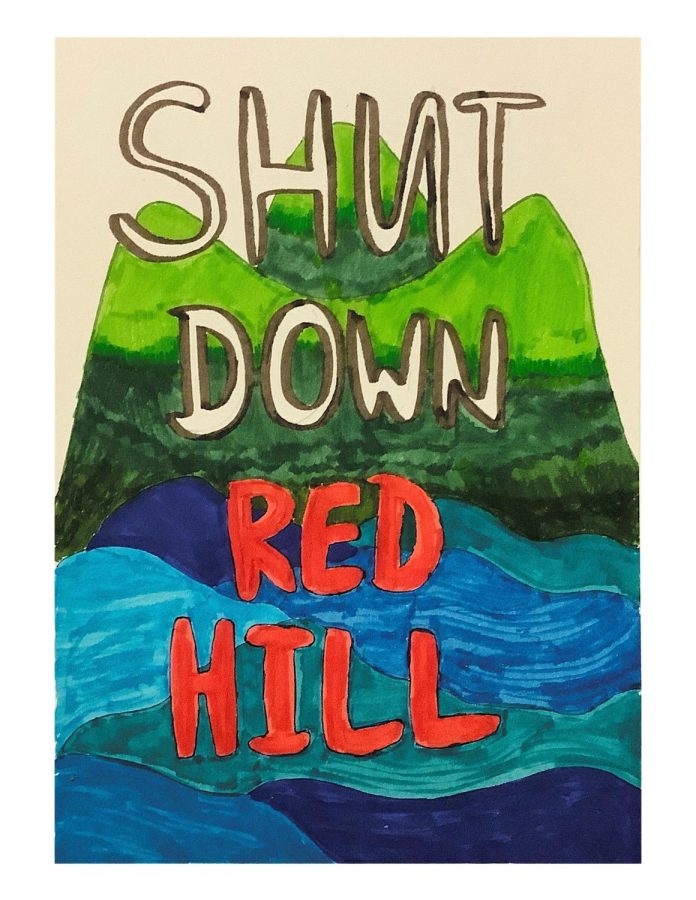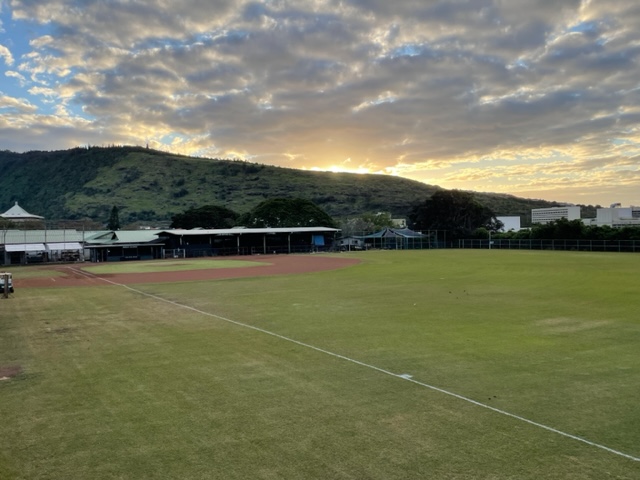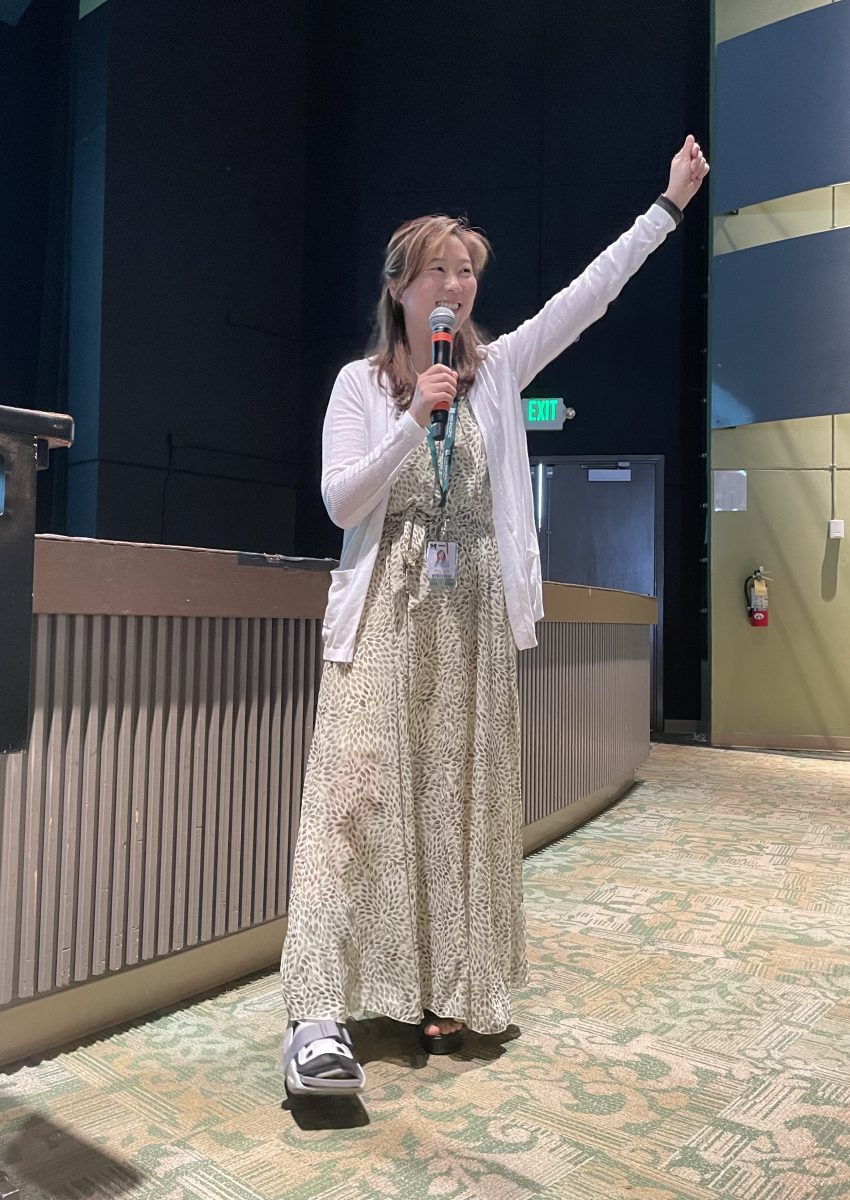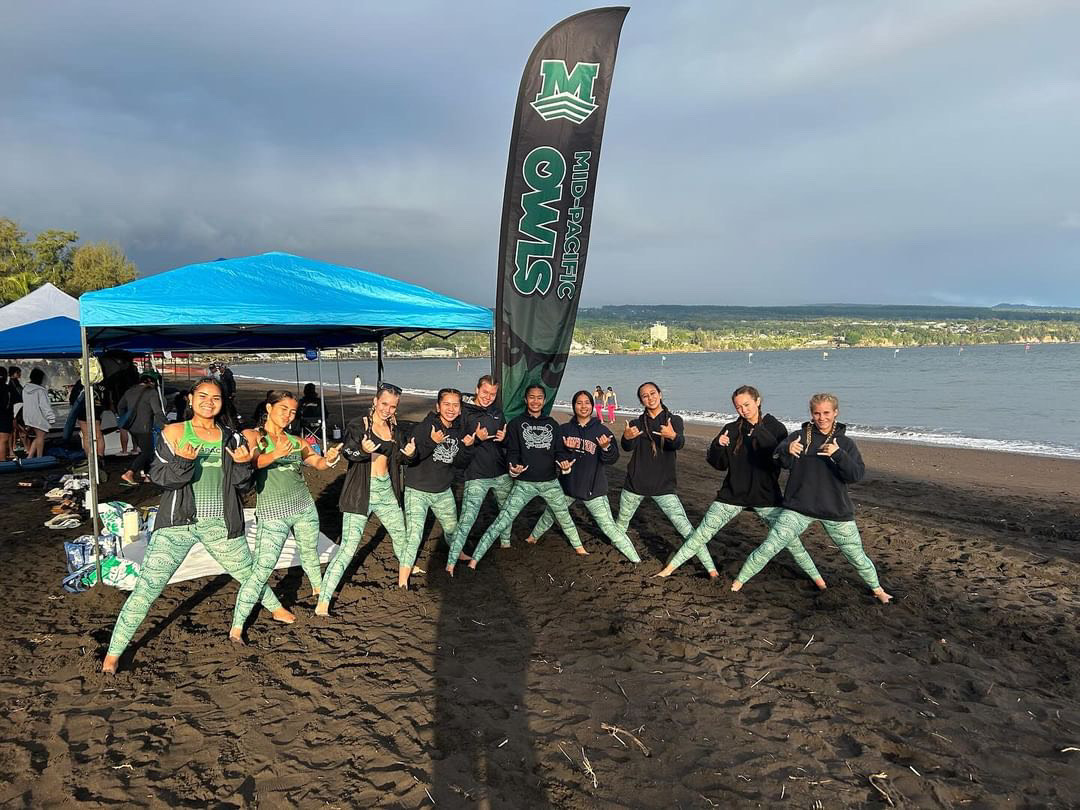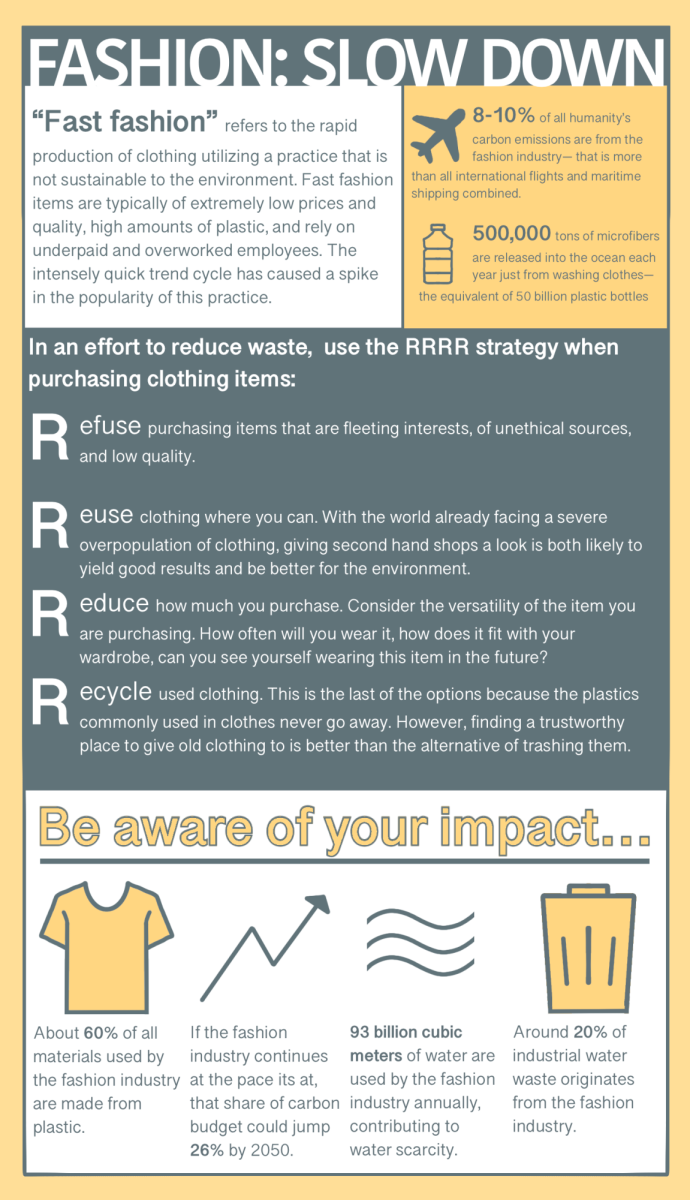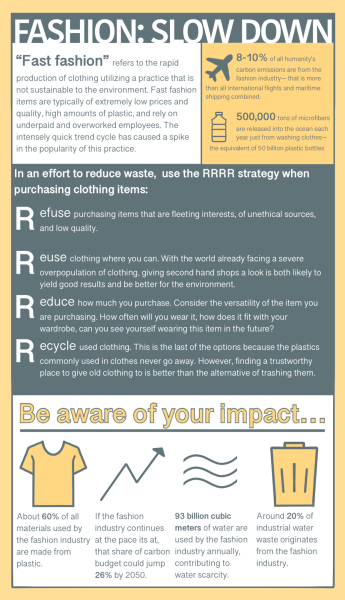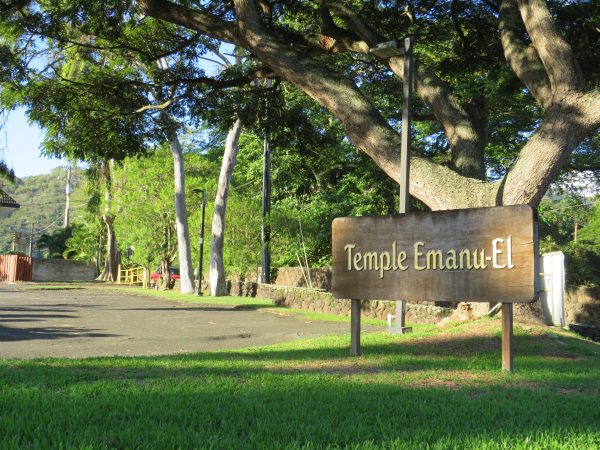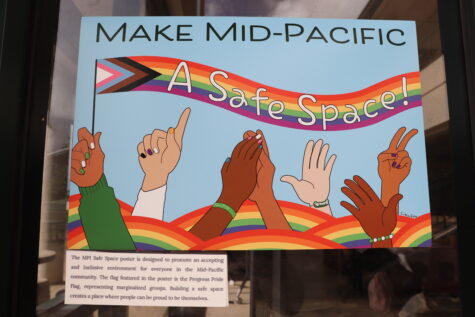Fuel in the Water
Illustration by Charlize Gaudiello
Shut Down Red Hill poster mirroring those waved at protests and put in store fronts.
October 25, 2022
For years unchecked, the US Navy’s storage tanks have leaked jet fuel into their facilities. That was until one leak caused irreparable damage to the water supplies resting below their base.
On November 20 of last year, the Navy’s jet fuel tanks burst and leaked 3,300 gallons into an important water supply for much of Oʻahu, which lies beneath Kapūkakī, primarily known as Red Hill. This was the water that thousands of residents on Oʻahu used.
The Navy first assessed that the drinking water was safe and no risk was presented to those in the area. It wasn’t until a week later that military families began to complain about a gasoline smell in their water and some even fell ill. The military then tested the water and deemed it unsafe for consumption.
The problem has profound implications.
“We’re small islands in the middle of the Pacific– it’s not like we can just pump water in from elsewhere,” Hawaiian Language teacher Shaun Kamakea-Young said.
During an investigation done by Rear Admiral Christopher Cavanaugh, years of military neglect were revealed. Those in charge poorly communicated and managed the facility at large. It was then apparent that leaks had been occurring for years, one having taken place in May of that same year.
Senior Spencer Fleming shared that his father who grew up in the area always noticed that the water in Kapūkakī always tasted weird, so he would instead get his water from school.
“It’s just funny that–I mean not funny in a haha way–but funny in a weird way that we’re finding out about it now,” Fleming said.
The Navy never properly fixed or addressed the leakages over the years. They did not have a proper plan in place that addressed the Kapūkakī well’s proximity to the fuel tanks and incorrectly assessed that there was no risk to the water.
This is far from the first time the US Military allowed carelessness to affect our islands. The leak in Kapūkakī was an eye-opening experience and reminder for many of the years of militarization in Hawaiʻi.
The first US Naval base was established in 1907 and the Puʻuloa base–also referred to as Pearl Harbor–was built in 1908. What would follow were years of bombing practices on our islands. In Mākua Valley, a place where many are still fighting for access to, the bombing only stopped in 2004.
“It’s [Mākua Valley] one of the most pristine beautiful valleys that they continue to just ravage,” Kamakea-Young said. “And there’s some Native plant species that are very important to certain practices– there’s maile up there that you can’t really find anywhere else. And now it’s harder and harder to access because of the military’s control over those certain areas.”
Mākua Valley, though no longer used for ground testing, is still occupied by the military because of the danger posed to citizens and its proximity to a military base. Much of our land is still occupied by the military. On Oahu alone, 21% of the island is used as a base.
After the leak on Kapūkakī, protestors called for the shutdown of Red Hill and some asked the military to leave our island. The reaction to this differed but the same sentiment was expressed: the military needs to do better.
Again and again, the military has shown our islands are at their disposal. Their lack of attention and care in the Kapūkakī situation only makes that more evident.
The islands aren’t just a place where we live and the dirt under our feet but to us– a lot of us trace our genealogies back to the islands themselves as if they’re familial members. And in the same way that you wouldn’t go and just dump gas all over your grandma, you wouldn’t allow that to happen,
— Shaun Kamakea-Young
“The islands aren’t just a place where we live and the dirt under our feet but to us– a lot of us trace our genealogies back to the islands themselves as if they’re familial members. And in the same way that you wouldn’t go and just dump gas all over your grandma, you wouldn’t allow that to happen,” said Kamakea-Young. “Why did we allow that? And it’s the way we view land as a commodity and less as an actual family member.”
Now, the Navy has made promises to defuel the storage facility.
This will take place by July 2024 and may take up to 12 months to complete. We’re looking at a later start date because the Navy first needs to perform maintenance on the site to begin defueling. Some have marched at the White House to demand an earlier execution of this plan and to make sure the military keeps its promise.
Work is being done in the right direction, but it’s nowhere close to being finished.
“We actually finally have something to agree on. Whether you’re military, local or just someone that moved, you can tell that it’s the wrong thing and that we have to fight against that,” said Fleming.

